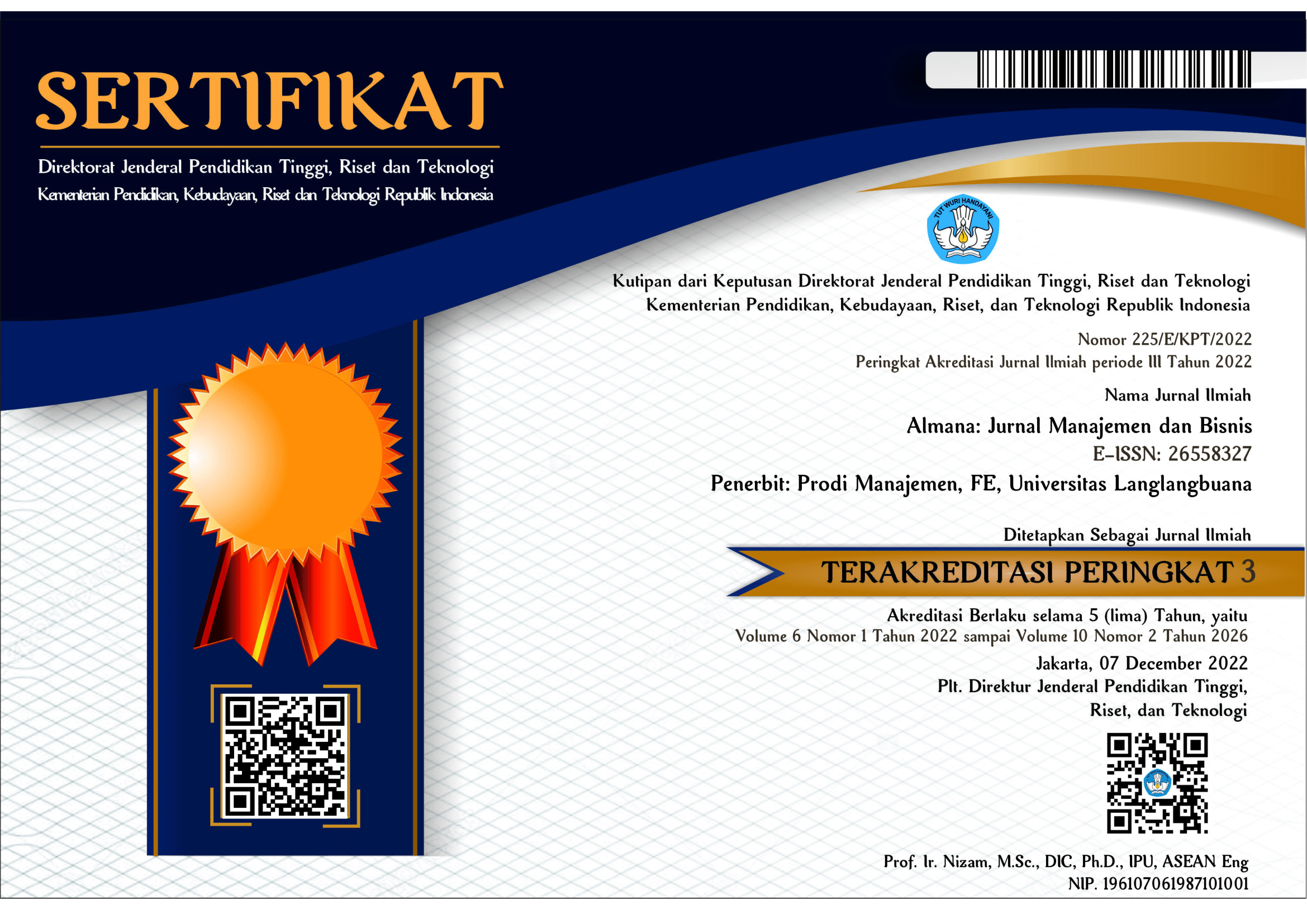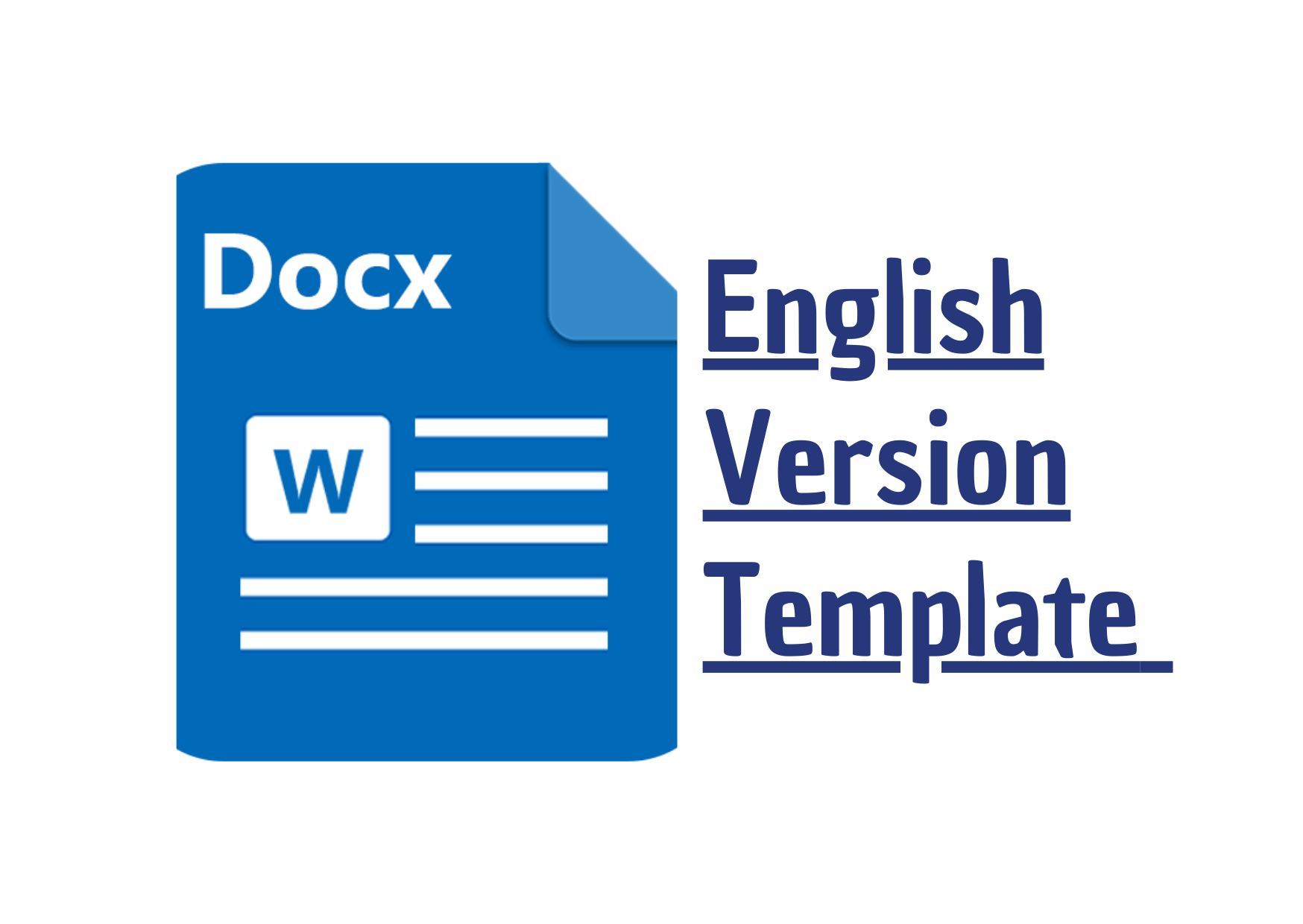Publication Ethics
All parties involved in the process of publishing Almana : Jurnal Manajemen dan Bisnis, that is editors, reviewers/readers, publishers, and writers must understand and comply with the norms or ethics of scientific publications. This statement is based on the COPE Best Practices Guidelines for Journal Editor.
Author's Duties
- Reporting Standards: The author must present an accurate report of the research conducted as well as important matters from the results of discussions that are objective. Researchers must present the results of their research honestly and without imitating, falsifying or manipulating inappropriate data. A scientific paper must contain information and bibliography that is sufficiently detailed to provide space for other researchers to continue their research. Fraudulent or intentionally inaccurate reporting is unethical and unacceptable behavior. Manuscripts must follow the guidelines for journal submission.
- Authenticity and Plagiarism: The writer must ensure that all his writings are truly authentic. Authors cannot submit one manuscript to more than one publication journal simultaneously unless it has been agreed by the editors. Previous papers and similar publications, whether done by other researchers or the authors themselves, can be recognized and used as references. If there is major literature used, it should be written using quotation marks. If there is a statement taken directly from the results of other researchers' publications, it should be marked with the word quote.
- Excessive publication at the same time: in general, authors may not submit the same manuscript more than one journal published at the same time. This is intended to avoid unethical and unacceptable behavior.
- Various publications born of personal research must be properly identified and the results of their publications can be used as a reference.
- Recognition of Sources used: Authors must acknowledge all sources of data used in the study and the results of citation publications that have influenced in determining the nature of the research. We recommend that we always provide proper recognition of the results of other people's research.
- Ownership: Ownership of published research must be able to accurately represent the contribution of each individual in scientific papers and reports. Ownership is limited only to researchers who make significant contributions, especially to the concepts, designs, interpretations of the studies submitted. As for other researchers who are equally contributing it should be written as the second, third, and so on the writer. When the largest contributor is written as the first author, the other contributors are written in the acknowledgment section. The author must ensure that all contributors have seen and agreed to the results of his work to be published and their involvement as the second, third, and so on.
- Disclosure and Conflict of Interest: All writers must disclose their manuscripts, both those related to finance and conflicts of interest, which may be limited by their effect on the day of interpretation of the manuscript of his writing. All financial sources/funds that support all projects must be disclosed.
- Fundamental Mistakes in Published Journal: If the writer finds a fundamental error or inaccuracy in the manuscript submitted, the writer must heed the suggestions and input from the journal editor or publisher and work with the editor to correct his writing.
- Hazards, Humans, and Animations: The author must be able to identify the hazards contained in the text of his paper such as the chemicals, procedures, and equipment used.
Editor's Duties
- Publishing Decision: Based on the review results of the editorial board report, editors can accept, reject, or request changes to the manuscript of scientific papers. The validation of the work and its importance for researchers and readers must always drive the decision. The editors can be guided by the policies of the journal editorial board and are limited by legal provisions such as entering into force regarding defamation, copyright infringement, and plagiarism. The editors can negotiate with other editors or reviewers in making this decision. Editors must be responsible for everything they publish and must have procedures and policies to ensure the quality of the material they publish and maintain the integrity of the published writings.
- Manuscript Review: The editor must ensure that each manuscript is initially evaluated by the editor for authenticity. The editor must arrange and use peer review that has a capable and wise capacity. Also, he must explain the peer review process in conveying information to the author and also indicate which parts of the journal are reviewed. Editors must also use appropriate peer reviewers for papers that are suitable for publication by selecting people who have sufficient competence and avoid conflicts of interest.
- The Principle of Justice: Editors must ensure that every text received by the editorial board of the journal is reviewed in terms of intellectual content regardless of the gender, race, religion, citizenship, etc. of the author. An important part of his responsibility is to make decisions that are fair and contain the principle of independence and editorial integrity. The editor is in a strong position by making publishing decisions, which makes it very important that this process is fair and as objective as possible.
- Confidentiality: The editor must ensure that information about the manuscript submitted by the author is kept confidential. The editor must critically assess any potential violation of the data protection and confidentiality of the author, including using appropriate information related to the latest research being presented, and research that is applicable and appropriate for publication.
- Disclosure and Conflict of Interest: Journal Editor will not use unpublished material to be disclosed in the manuscript submitted for own research without the written consent of the author. The editor should not be involved in decisions about which papers have conflicts of interest
Review / Review Tasks
- Confidentiality: Information regarding the text submitted by the author must be kept confidential and treated as confidential information. They may not be shown or discussed with anyone except as authorized by the editor.
- Recognized Sources: Reviewers must ensure that the authors have acknowledged all sources of data used in their writing. He must also identify related scientific papers that are published and not quoted by the author. Some statements that observations, derivations, or opinions that have been previously reported should be accompanied by relevant quotations. Reviewers must notify the editorial board of the journal as soon as possible if they deviate, such as aspects of work ethics, are aware of substantial similarities between the manuscripts reviewed and the manuscripts submitted to other journals or articles published, or suspect that this can happen both as long as research or writing and submission of manuscripts; the reviewer, however, must maintain the confidentiality of the author and not investigate further unless the journal editorial board requests further information or advice.
- Objectivity Standards: The review of the submitted text must be carried out objectively and reviewers must express their views with clear and supportive arguments. He must follow the journal's instructions regarding the specific feedback the author needs unless there is a reasonable reason for not following him. The reviewer should be constructive in his review and provide feedback that will help the writer to improve the quality of the manuscript, provide suggestions and input that can support the statements written in the text with the consideration that it can improve the quality of the writer's writing.
- Disclosure and Conflict of Interest: Privileged information or ideas obtained through peer review must be kept confidential and not used for personal advantage. Reviewers should not consider manuscripts in which they have conflicts of interest resulting from competitive, collaborative, or other relationships or connections with any of the authors, companies, or institutions connected to the papers. In the case of a double-blind review, if they suspect the identity of the author (s) notify the journal if this knowledge raises any potential conflict of interest.
- Confidential information or ideas obtained through peer review must be kept confidential and not used for personal gain. The reviewer must not consider which manuscripts have a conflict of interest that will give birth to a competitive, collaborative, or other relationship or connection with one of the authors, companies, or institutions related to the writing. If there are two confusing views, the reviewer can suspect the author's identity by informing the editorial board that this article has the potential to create a conflict of interest.
- Accuracy: Reviewers must respond within the agreed time frame. He only agreed to review the manuscript if they were sure they could deliver the results of the review within the agreed time, inform the journal as soon as possible if they needed more time. If he feels it is not possible to complete the review of the manuscript within the allotted time, then this information must be communicated to the editor, so that the manuscript can be sent to other reviewers.






